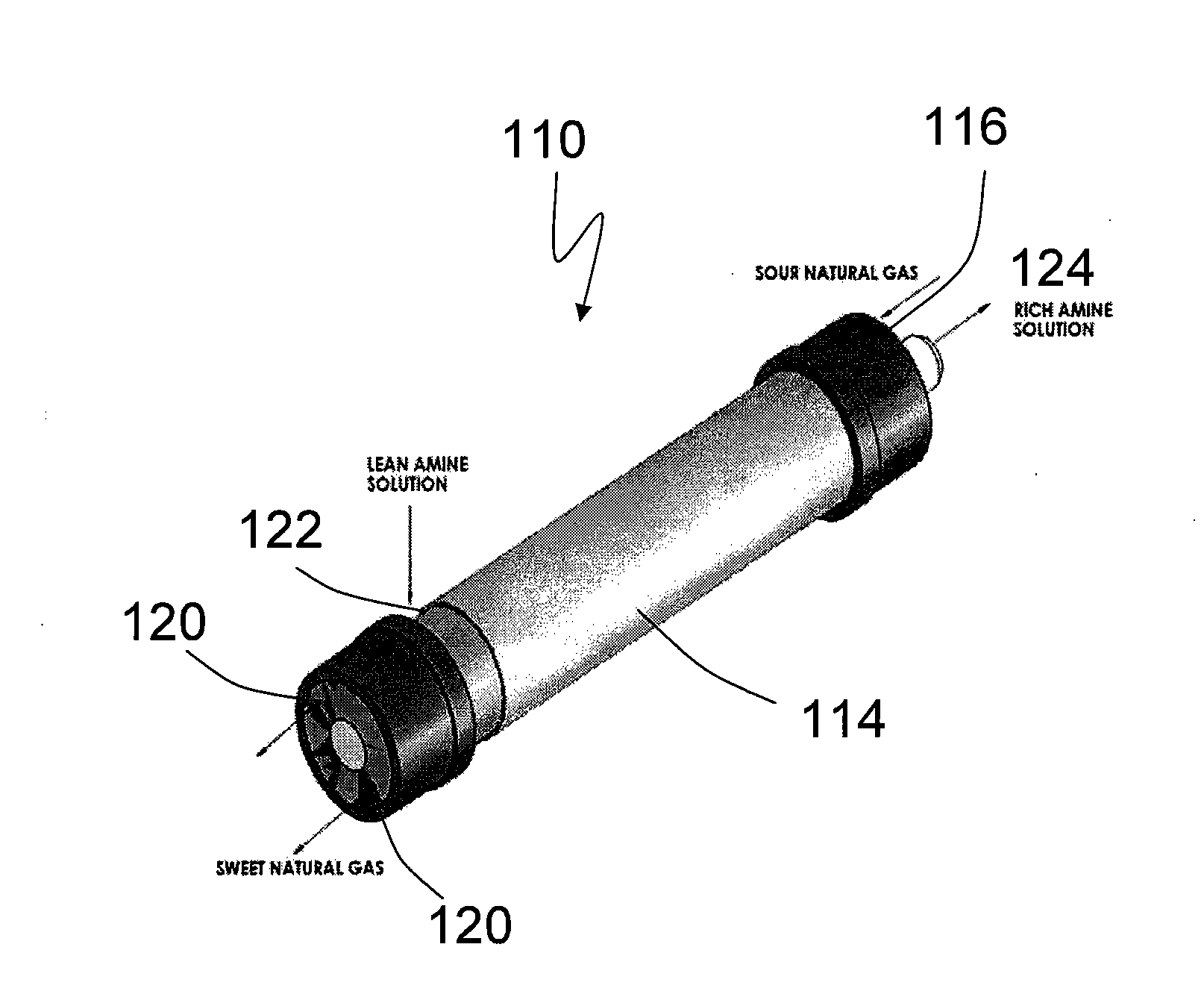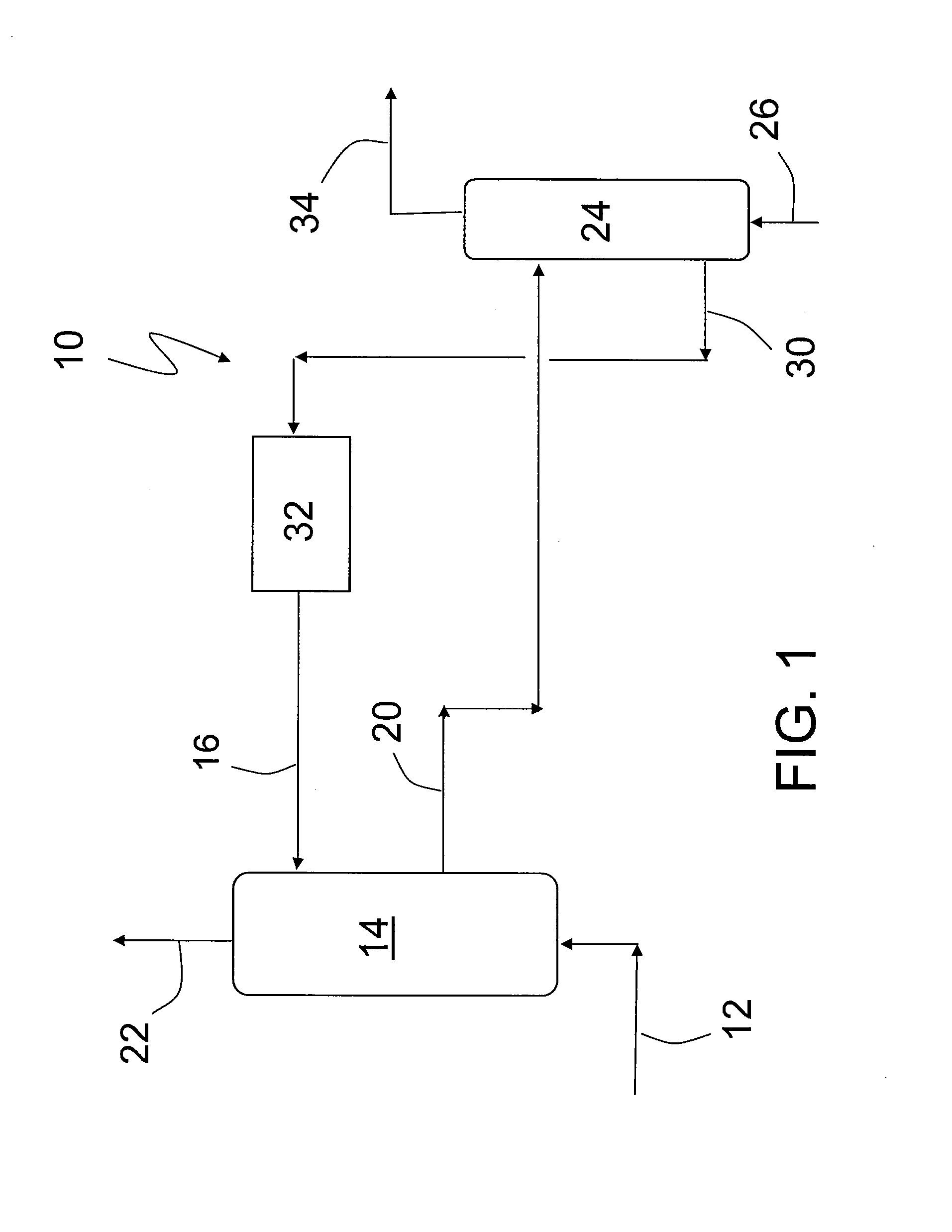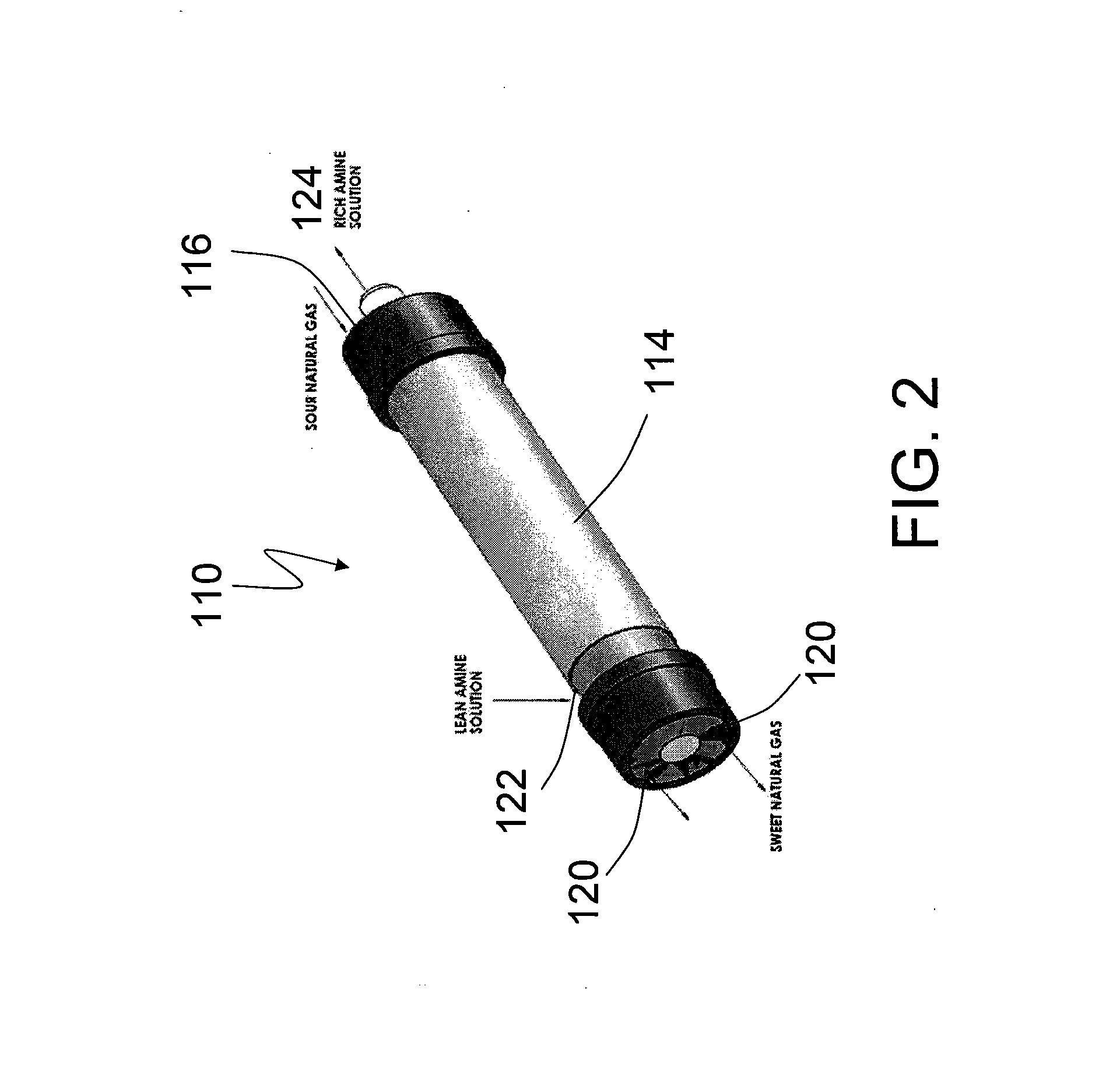Sweetening of natural gas
a technology of natural gas and sweetening towers, applied in the field of purification, can solve the problems of liquid channeling, entrainment, foaming, and large size of conventional absorption towers in both amine sweetening systems and teg dehydration systems
- Summary
- Abstract
- Description
- Claims
- Application Information
AI Technical Summary
Benefits of technology
Problems solved by technology
Method used
Image
Examples
examples
[0049]In these Examples, more than 30 two-inch diameter, 12-inch long cartridge-containing hollow fiber contactor modules with circa 10 ft2 of hollow fiber surface area and having varying physical characteristics of fiber pore size and porosity, fiber dimensions, fiber packing density and fiber surface areas were tested.
examples 1-6
[0050]In these Examples, module performance was tested for CO2 removal utilizing a DEA solvent system. The feed pressure was 500 psig and the feed contained about 8% by volume CO2 with the remainder nitrogen. The CO2 was efficiently removed to generate a product containing less than 2.0 vol. % residual CO2. The gas side pressure drop, the liquid side pressure drop, and the lean and rich loading of the DEA solvent were also measured. The best performing hollow fiber contactor results are summarized in the section below. This module was fabricated with hollow fiber PEEK hollow fibers that had an intrinsic CO2 permeance of 1000 GPU measured using pure CO2 at 30° C.
[0051]Test results and mass transfer coefficient calculations for this module are shown in Table 2. The gas-side flow pressure drop, the liquid-side flow pressure, and the lean and rich loading of the DEA solvent for this module are shown in Table 3.
TABLE 2InletKGa,CO2,Outlet%mol / (m3 · hr ·KG,KGa,Example%CO2, %RemovalKpa)cm / s...
examples 7-14
[0058]In these Examples, module performance was tested for CO2 removal utilizing a DEA solvent system. The gas inlet pressure was 950 psig, the gas inlet temperature was 77° F. and the feed contained about 1% by volume CO2 with the remainder nitrogen. The liquid inlet pressure was 950 psig and the liquid inlet temperature for Examples 7 and 8 was 105° F. and for Examples 9-14 was 78° F.
[0059]The hollow fiber contactor results are summarized in Table 4, below.
TABLE 4Inlet CO2,OutletTotal InletKGa,% CO2Examplevol %CO2, ppmvGas, SCFH(1 / s)Removal70.963150 ± 1052.60.01698.581.104140 ± 1026.40.00898.790.96380 ± 952.50.01699.0100.98465 ± 6104.90.03299.3110.98351 ± 5209.90.06599.4120.960 72 ± 10287.90.08999.2131.27066 ± 7319.00.09999.5141.150564 ±20 624.60.17694.3
[0060]The CO2 was efficiently removed to generate a product containing residual CO2 levels indicating the ability to satisfy LNG specifications, e.g., residual CO2 levels below 100 ppmv, preferably significantly below 100 ppmv, and...
PUM
| Property | Measurement | Unit |
|---|---|---|
| diameter | aaaaa | aaaaa |
| diameter | aaaaa | aaaaa |
| temperature | aaaaa | aaaaa |
Abstract
Description
Claims
Application Information
 Login to View More
Login to View More - R&D
- Intellectual Property
- Life Sciences
- Materials
- Tech Scout
- Unparalleled Data Quality
- Higher Quality Content
- 60% Fewer Hallucinations
Browse by: Latest US Patents, China's latest patents, Technical Efficacy Thesaurus, Application Domain, Technology Topic, Popular Technical Reports.
© 2025 PatSnap. All rights reserved.Legal|Privacy policy|Modern Slavery Act Transparency Statement|Sitemap|About US| Contact US: help@patsnap.com



